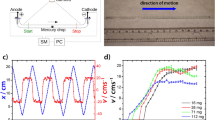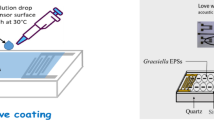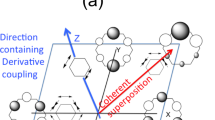Abstract
WAZOWNEK and his collaborators have studied the reduction of conjugated systems at the dropping mercury electrode1. They have brought forward evidence to support the following mechanism :
This is a preview of subscription content, access via your institution
Access options
Subscribe to this journal
Receive 51 print issues and online access
$199.00 per year
only $3.90 per issue
Buy this article
- Purchase on SpringerLink
- Instant access to full article PDF
Prices may be subject to local taxes which are calculated during checkout
Similar content being viewed by others
References
Wazownek et al., J. Amer. Chem. Soc., 64, 1765, 2365 (1942); 68 2541 (1946).
Hückel, Int. Conf. on Physics, 9 (London, 1934).
Maccoll, Nature [163, 138 (1949)].
Burton and Ingold, J. Chem. Soc., 2022 (1929).
Ziegler, Z. angew. Chem., 49, 449 (1936). See also. Birch, Faraday Society Discussion on the Labile Molecule, 246 (1947).
Author information
Authors and Affiliations
Rights and permissions
About this article
Cite this article
MACCOLL, A. Reduction Potentials of Conjugated Systems. Nature 163, 178–179 (1949). https://doi.org/10.1038/163178a0
Issue date:
DOI: https://doi.org/10.1038/163178a0
This article is cited by
-
Simple and accurate correlation of experimental redox potentials and DFT-calculated HOMO/LUMO energies of polycyclic aromatic hydrocarbons
Journal of Molecular Modeling (2013)
-
Spectral Sensitization of Photoconductivity of Poly(N-epoxypropylcarbazole) and Benzaldehyde Diphenylhydrazones by Ternary Complexes of Triphenylmethane Dyes
High Energy Chemistry (2005)
-
Esr and polarography of nitroazoles. 4. Polarographic study of nitrobenzimidazoles
Chemistry of Heterocyclic Compounds (1984)
-
Electrode behaviour of insoluble suspensions of metal-free phthalocyanines in methylene chloride
Journal of Applied Electrochemistry (1977)
-
Electrochemical characteristics of anthrapyridone and its derivatives
Chemistry of Heterocyclic Compounds (1976)



